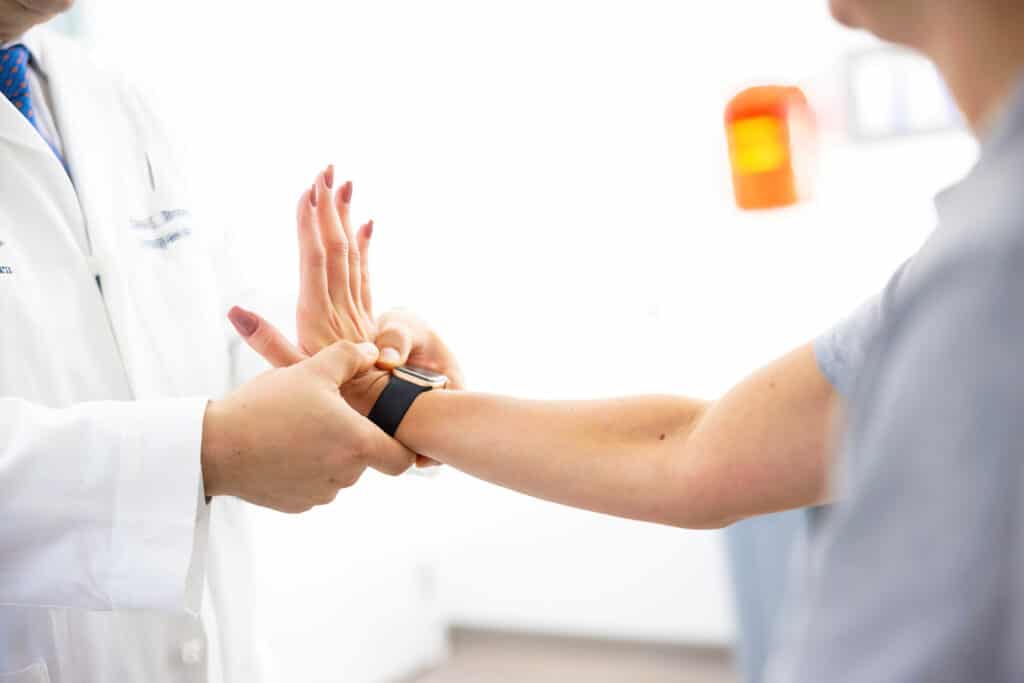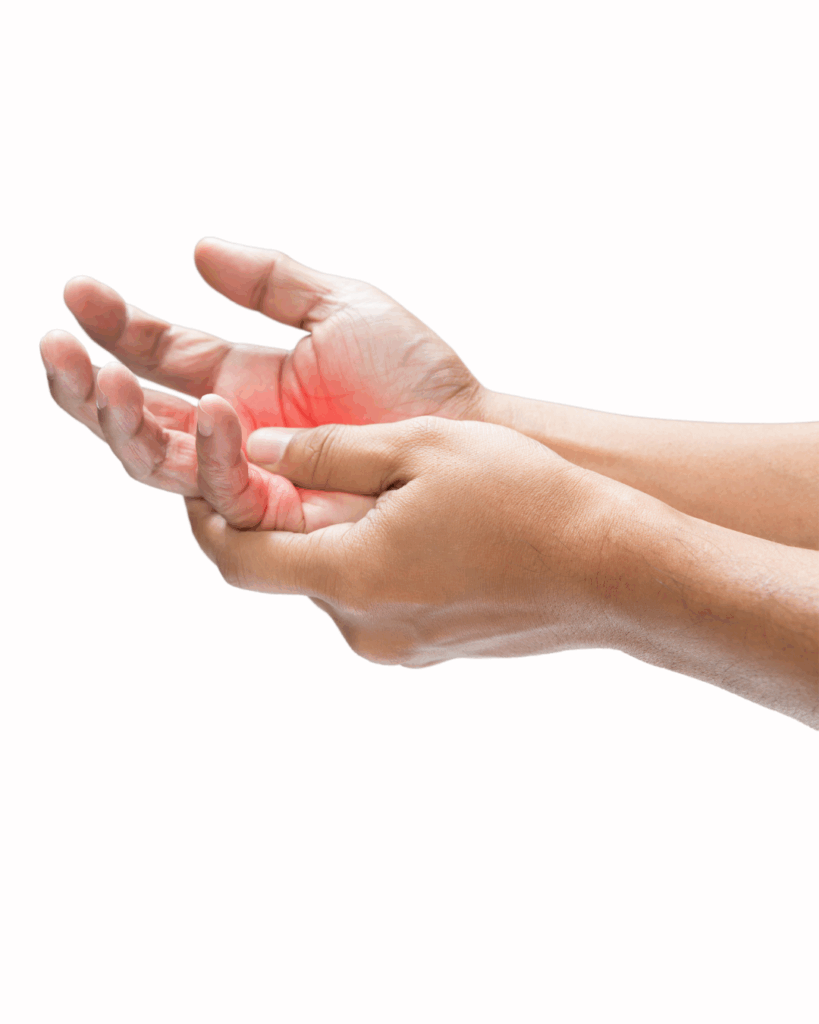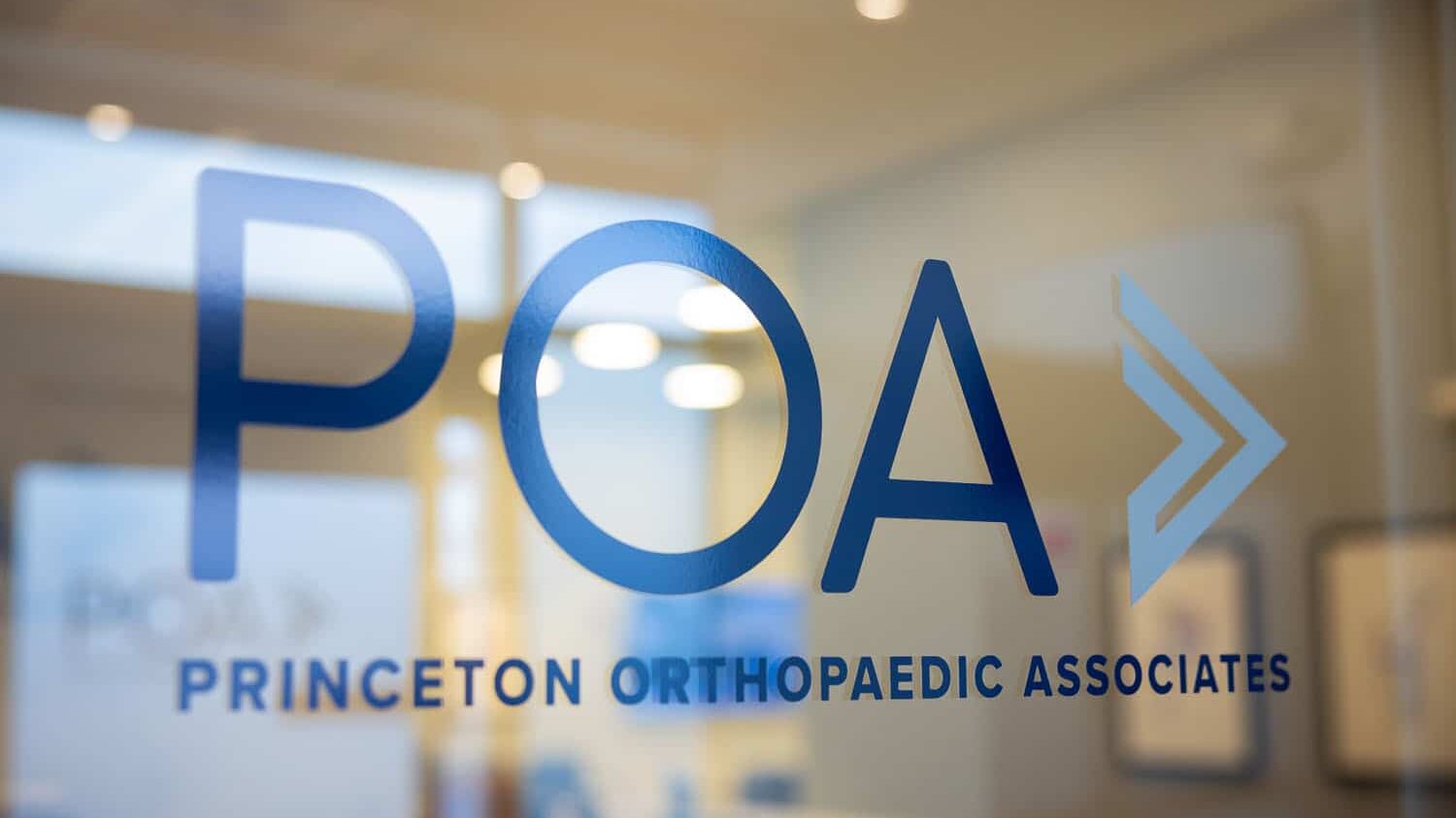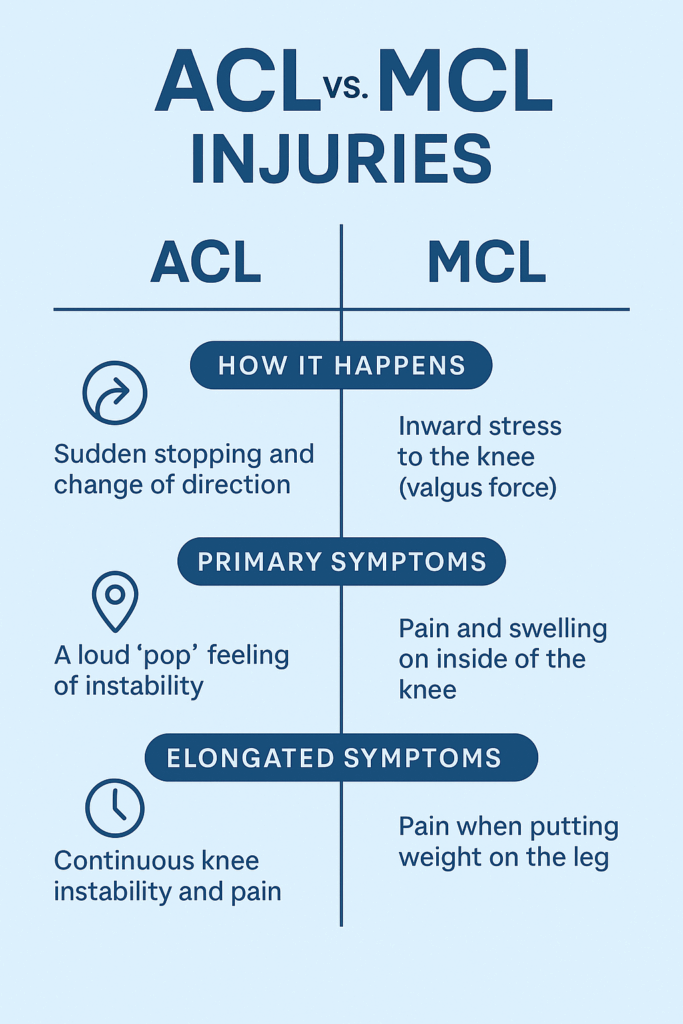
Book An Appointment
Physician Assistants
Physical & Occupational Therapists
KneeMRI ScansNon-OperativePhysiatry
Physical Therapy
Podiatry
Spine
Sports Medicine
TraumaUrgent Care
X-Ray Imaging


Often, it starts subtly. You might notice a small lump in the palm of your hand. It isn’t painful, but it's firm and a little odd. Then you start to notice you're struggling to lay your hand flat on a table, or your fingers don’t extend like they used to when you stretch. Gripping a steering wheel, shaking hands, or even putting gloves on begins to feel different. Over time, one or more of your fingers start to curl inward toward the palm. This is often how Dupuytren's Contracture begins. A subtle, creeping change that slowly starts to change your hand function and your daily routine.
Dupuytren's Contracture is a hand condition where the tissue beneath the skin of your palm thickens and tightens over time. This fibrous tissue, known as fascia, can form cords that pull one or more of your fingers into a bent position. Once a finger is bent, it may not straighten fully, limiting your ability to perform daily activities.
Dupuytren's Contracture most commonly effects the ring and little fingers and usually progresses slowly over months or even years. Though not typically painful, it can significantly impact your hand function and quality of life.
Symptoms of Dupuytren's Contracture tend to develop gradually. Many people don’t notice anything is wrong until the condition has significantly progressed.
The exact cause of Dupuytren's Contracture is still not fully understood, but several contributing factors are known. It seems to be a combination of genetic and environmental triggers that lead to the thickening of connective tissue in the hand.
Contributing factors for developing Dupuytren's Contracture:
Unfortunately, there is no guaranteed way to prevent Dupuytren's Contracture, especially if you have a strong genetic predisposition. However, managing certain lifestyle choices may help reduce the risk or delay its onset.
Yes, Dupuytren's Contracture is strongly linked to genetics. If you have a family history of the condition, you have a higher chance of developing it. It is often referred to as a hereditary condition, especially prevalent among those of Northern European ancestry.
This doesn’t mean you’re guaranteed to develop it, but you may want to keep an eye out for early signs and consult a healthcare provider if you notice symptoms.

While Dupuytren's Contracture cannot be cured entirely, several treatments and management strategies can help maintain hand function and slow progression.
When the condition begins to interfere with your hand function, more active treatments may be helpful. These treatments for Dupuytren's Contracture can range from minimally invasive procedures to surgery.
Surgery (fasciectomy): In more severe cases, the thickened tissue is surgically removed.
Needle aponeurotomy: A needle is used to break the cords of tissue causing finger contraction.
Enzyme injections (collagenase): An enzyme is injected to soften and break down the cords.
Several factors may accelerate the progression or severity of Dupuytren's Contracture. Understanding these can help you avoid worsening the condition.
Overuse or certain jobs have not been definitively proven to cause Dupuytren’s Contracture. While it might seem like repetitive hand use or manual labor is the culprit (especially because many people who do physical work notice the symptoms), research hasn’t confirmed a direct cause-and-effect link.
Some people used to think Dupuytren’s Contracture was mostly a problem for manual laborers because of things like hand strain or using vibrating tools. But more recent research shows it can affect anyone, no matter what kind of job they have, even people who work at desks all day. Physical work might make the symptoms show up sooner, but it doesn’t actually cause the condition. If anything, overusing your hands once Dupuytren’s has started might make it worse, but it’s not the root cause.
Making practical adjustments to your daily activities can help you maintain your independence and comfort as you manage Dupuytren's Contracture.
If you notice any signs of finger contracture or thickened tissuein your palm, you should see a hand specialist. Early diagnosis can lead to better treatment outcomes.
Signs it’s time to see a specialist:
Diagnosis usually involves a physical examination. An orthopaedic hand specialist will assess the flexibility of your fingers and look for nodules or cords in the palm.
What the evaluation includes:

Please contact us! We'd love to help.
If you have pain, please contact us and schedule an appointment. We have urgent care facilities all over New Jersey for your convenience.
Yes, while there is no cure, Dupuytren's Contracture is treatable. With appropriate care, many people regain much of their hand function or prevent further deterioration. Early intervention is often key.
Treatment outcomes vary based on the severity of the condition and the method used. Some treatments offer lasting relief, while others may need to be repeated.
Living with Dupuytren's Contracture can be manageable with awareness and timely care. Many people continue to live active, fulfilling lives with the help of therapy, medical treatments, and modifications. Emerging therapies and surgical techniques continue to improve outcomes.
Stay informed, stay proactive, and don’t hesitate to seek help when changes begin.
Avoiding certain actions can help prevent further damage or worsening of the condition.
This blog post is meant to be informative and should not act as a self-diagnosis tool. If you’d like to see one of our doctors, please contact us here.
At Princeton Orthopaedic Associates, your journey to better mobility and less pain doesn't end at the clinic doors. We’re thrilled to now offer Prescribe FIT, an innovative, insurance-covered virtual health coaching program that brings real, lasting change right to your home.
Whether you’re preparing for surgery, recovering from one, or simply hoping to reduce joint pain and improve your lifestyle, Prescribe FIT was made with you in mind.
Prescribe FIT is more than just a health coaching program; it’s a partnership. You are paired with your own dedicated health coach, who works one-on-one with you to support healthier eating habits, consistent physical activity, and other simple lifestyle changes that can have a significant impact on orthopedic health.
This isn’t a one-size-fits-all solution. Your health coach will tailor each step to your unique goals, challenges, and daily routines, helping you stay motivated, on track, and supported every step of the way.
Musculoskeletal (MSK) conditions like osteoarthritis, back pain, joint injuries, and post-surgical recovery are deeply affected by lifestyle habits. For many patients, weight loss and increased mobility are essential to reducing joint stress and chronic discomfort.
With Prescribe FIT, you can:
And the best part? You do it all from the comfort of your home, with expert support just a phone call or message away.
We believe that better health should be accessible to everyone. That’s why Prescribe FIT is covered by Medicare, Medicaid, and most major commercial insurers. Our friendly POA team will help you verify your eligibility and explain any financial responsibilities up front, so you can focus on your health, not the paperwork.
If you’ve been told weight loss or lifestyle changes could help your orthopedic condition, but you’re unsure where to start, Prescribe FIT is the perfect place. There’s no pressure, no crash diets, no complicated gym routines. Just real, achievable goals that help you feel better, move better, and live better.
At POA, we’re always looking for ways to expand your care beyond the exam room. Prescribe FIT is one more way we’re investing in your long-term wellness, because how you heal matters just as much as where you heal.
Ask your POA provider about Prescribe FIT at your next visit, or contact us today to learn more about enrollment.
Let’s take the first step, together.
An ACL tear typically occurs during sudden pivoting, awkward landings, or stops, which are common in sports such as basketball, soccer, and skiing. It usually starts with a moment, an awkward pivot during a pickup basketball game, a sudden stop on the soccer field, or landing just slightly wrong after a jump. You might feel a sharp pain, instability, or hear that telltale pop. You go down, maybe hoping it’s nothing, but your knee swells, and walking becomes difficult. That’s the moment many athletes, professional, weekend warriors, or even teenagers, begin their journey with an ACL tear.
Understanding how to recognize a minor knee issue needing minimal home treatment versus what may be an ACL tear can be critical to the proper treatment and the fastest path to healing.
Your knee is one of the most complex joints in your body, and the ACL is one of its most important components. It plays a huge role in keeping your knee stable and allowing you to move with confidence, whether you're sprinting down a field or simply walking downstairs.
The ACL (anterior cruciate ligament) is one of the four major ligaments in your knee, connecting your thigh bone (femur) to your shinbone (tibia). Its job is to stabilize the knee, especially during rotation, pivoting, and rapid direction changes. That makes it crucial for athletes, but also important for anyone who walks, runs, or climbs stairs.
When the ACL tears, it doesn’t heal on its own. And unlike muscles, ligaments don’t regenerate well without surgical reconstruction.
If you’ve injured your knee and are wondering if it’s your ACL, you’re not alone. Knowing what symptoms to look for can help you decide whether it’s time to see a doctor or get imaging.
Here’s what people often report:
Some people can walk after an ACL tear, especially once swelling subsides, but the knee often feels unstable. Grade 1 (mild) tears may feel like soreness and instability under stress, but they’re rare. By two weeks post-injury, swelling may reduce, but instability often persists.

Knee injuries can be confusing because symptoms often overlap. The ACL and MCL are two different ligaments with different functions, injury mechanisms, and treatment approaches. Understanding the difference is critical for proper recovery.
Many people confuse ACL and MCL (medial collateral ligament) injuries. Here’s how an ACL tear and MCL tear differ:
| ACL Tear | MCL Tear | |
| Location | Inside the knee, central | Inside of the knee (medial side) |
| Mechanism | Pivoting, cutting, or landing | Direct blow to outer knee or overstretching |
| Sound | Often a pop | Less commonly a pop |
| Swelling | Fast and significant | Less severe swelling |
| Instability | Knee feels unstable or “gives out” | Usually more stiff than unstable |
| Healing Potential | Does not heal on its own | Often heals without surgery |
| First-line Treatment | Physical therapy or surgical reconstruction | Bracing, rest, and physical therapy |
| Surgery Needed? | Often required in active patients | Rarely required (unless Grade 3 + other injuries) |
| Return to Sport | 6–12 months (after reconstruction) | 4–12 weeks (depending on severity) |
Key difference: An MCL tear can often heal with rest and bracing. An ACL tear usually won’t.
Yes, and this is more common than people think, especially in sports injuries. This is called a combined ligament injury and often involves the ACL, MCL, and/or meniscus. These cases require specialized surgical planning and longer rehabilitation timelines, making early diagnosis even more critical.
While some clues (pain location, swelling speed, mechanism) may point toward one ligament over the other, you cannot reliably self-diagnose an ACL or MCL tear. Some people with a complete ACL tear are still able to walk or bend their knee, which can be misleading.
We recommend consulting one of our sports medicine specialists or an orthopedic knee surgeon as soon as possible. A timely and accurate diagnosis gives you the best chance of a full recovery and of avoiding chronic knee issues.
When it comes to ACL injuries, age matters. Kids and teens are still growing, and that can make treatment more complicated. What’s best for a 14-year-old soccer player may be very different from what’s recommended for a 30-year-old runner.
ACL injuries are increasing in adolescents, especially teenage athletes. The growth plates (areas of developing cartilage near the ends of long bones) in kids add complexity:
In adults, decisions are often based on lifestyle, activity level, and degree of instability.

Please contact us! We'd love to help.
If you have pain, please contact us and schedule an appointment. We have urgent care facilities all over New Jersey for your convenience.
Surgery isn't always required for an ACL tear, but it can often be recommended. Once you’ve torn your ACL, the big question is: Do you need surgery? The answer depends on your goals, age, activity level, and the nature of the tear. For some, physical therapy may be enough. For others, reconstruction is the most straightforward path back to full function. Your treatment path is specific to you, and our specialists will build a plan that meets the needs of your injury and desired recovery outcome.
Mild (grade 1) sprains may recover within 3–6 weeks with rest and rehab.
For:
Approach:
Surgery may sound intimidating, but for many people, it offers the best chance at regaining full knee stability and returning to high-level physical activity. The procedure is common, safe, and continually improving.
Most active individuals, especially athletes or younger patients, choose ACL reconstruction. Here’s how it works:
Factors influencing surgery:
Sometimes what you don’t do is just as important as what you do. The wrong move after an ACL tear can worsen the injury or lead to complications down the line.
Leaving an ACL tear untreated can lead to further joint damage, including cartilage wear or meniscus tears.
Some people can still walk, squat, or bend their knee shortly after tearing their ACL. However, without stability, these motions can cause further injury. If you suspect you have an ACL tear we recommend you see a orthopaedic specialist as soon as possible for a comprehensive evaluation.
An ACL tear is a detour, not a dead end. With the right care, commitment, and patience, people of all ages get back to running, jumping, and playing, often even better than before.
Tearing your ACL can feel like the end of your athletic identity, but it’s not. Thousands of people, from high school athletes to weekend hikers to pro players, successfully return to sports and active lifestyles every year.
The key is getting the right diagnosis, choosing the right treatment path for your goals, and committing to smart, structured rehab.
While some symptoms can help differentiate between the two, it’s extremely difficult to diagnose knee ligament injuries accurately without imaging and specialist assessment.
Bottom Line: Always get a clinical evaluation with a knee specialist, especially if you heard a pop, felt instability, or have swelling. Don’t self-diagnose based on symptoms alone.
Tearing your ACL may feel overwhelming, but it's not the end of your active lifestyle. Whether you're a competitive athlete or someone who just wants to move without fear, recovery is possible with the right approach. From early diagnosis and personalized treatment plans to structured rehab and return-to-play timelines, every step forward matters. Understanding your options is the first step toward getting back to what you love, with strength and confidence.
If you’re reading this, you may be worried about what’s next. Take a breath, you’re not alone. Understanding your injury is the first step toward healing. Now it’s time to take action. If you suspect an ACL tear, don’t wait. Get evaluated by a sports medicine physician or orthopedic specialist. Early diagnosis means earlier healing and a better chance of getting back to doing what you love.
While both ACL and meniscus injuries are common in athletes and active individuals, they are very different in structure, symptoms, and recovery needs. Knowing the distinctions can help guide proper diagnosis and treatment.
| Symptom | ACL Tear | Meniscus Tear |
| Popping Sound | Very common | May occur, but less dramatic |
| Swelling | Rapid (within hours) | Gradual (over 24–48 hours) |
| Instability | Knee may "give out" | Usually feels stable |
| Pain Location | Deep or central knee | Side or back of knee (depending on tear location) |
| Mobility | Loss of motion due to swelling and instability | May still walk, but discomfort with twisting/squatting |
| Symptom | ACL Tear | Meniscus Tear |
| Knee Giving Out | Frequent instability, especially during pivoting | Rarely unstable |
| Locking or Catching | Uncommon | Very common — knee may catch or lock during motion |
| Grinding or Clicking | Occasionally | Common, especially with movement |
| Degeneration Risk | Higher if combined with meniscus injury | Increases risk of arthritis over time |
| Return to Activity | Difficult without surgery for active individuals | Sometimes possible without surgery, depending on severity and tear location |
A meniscus tear often presents with joint line tenderness and mechanical symptoms (like locking), while an ACL tear leads to feelings of instability and swelling shortly after injury. However, since both can coexist, and symptoms can overlap, accurate diagnosis with an MRI and specialist evaluation (by a POA or orthopedic physician) is essential. Read more about meniscus tears.
| ACL | Meniscus | |
| Function | Stabilizes the knee | Cushions and supports joint movement |
| Injury Type | Ligament | Cartilage |
| Instability? | Yes | Rarely |
| Locking | Rare | Common |
| Needs Surgery | Often (for active patients) | Sometimes, depending on tear type |
This blog post is meant to be informative and should not act as a self-diagnosis tool. If you’d like to see one of our doctors, please contact us here.
© 2025 Princeton Orthopaedic Associates. The contents of PrincetonOrthopaedic.com are licensed under a Creative Commons Attribution-NonCommercial 4.0 International License. Copying without permission is strictly forbidden. Privacy Policy | Accessibility
